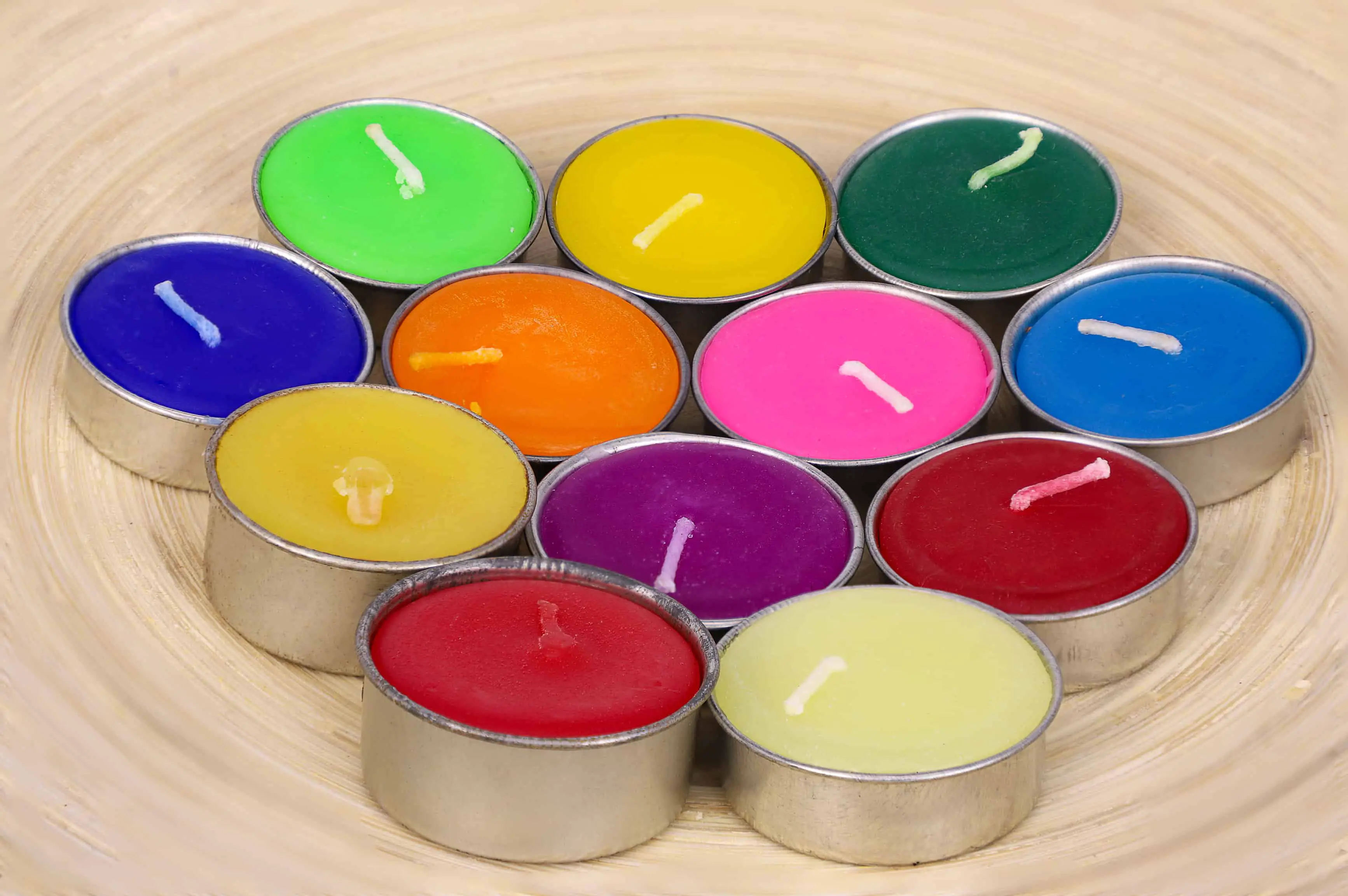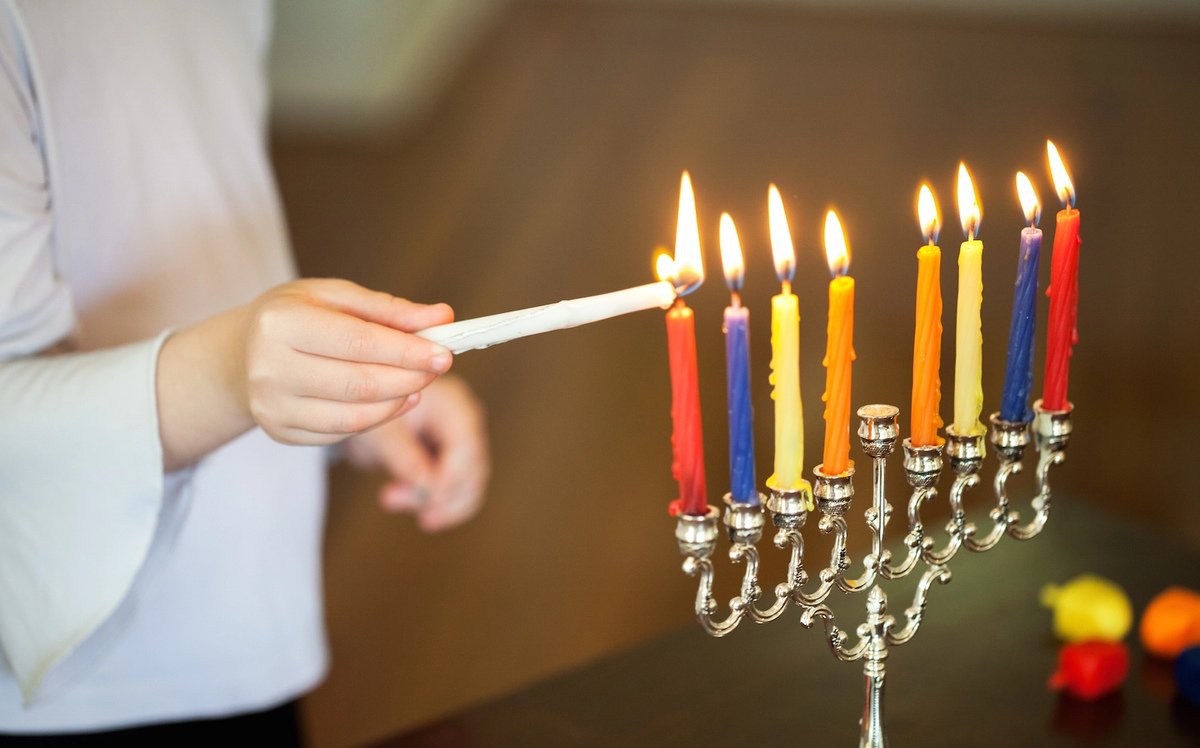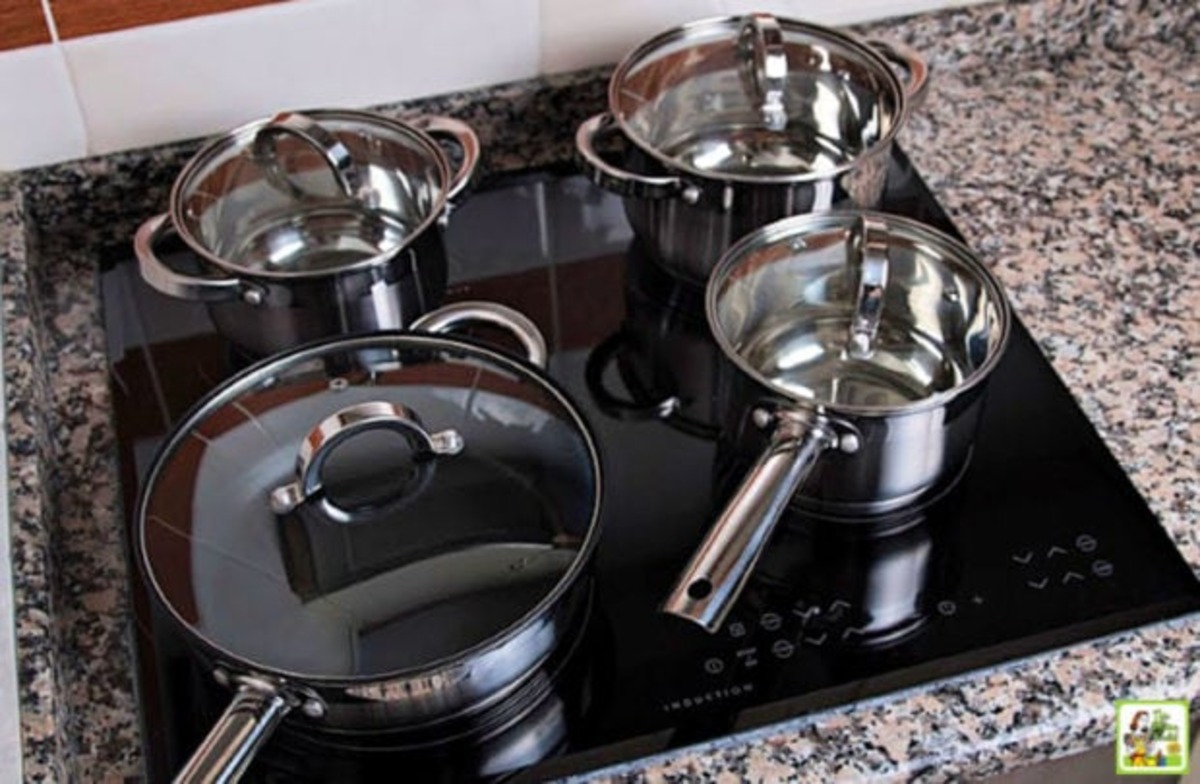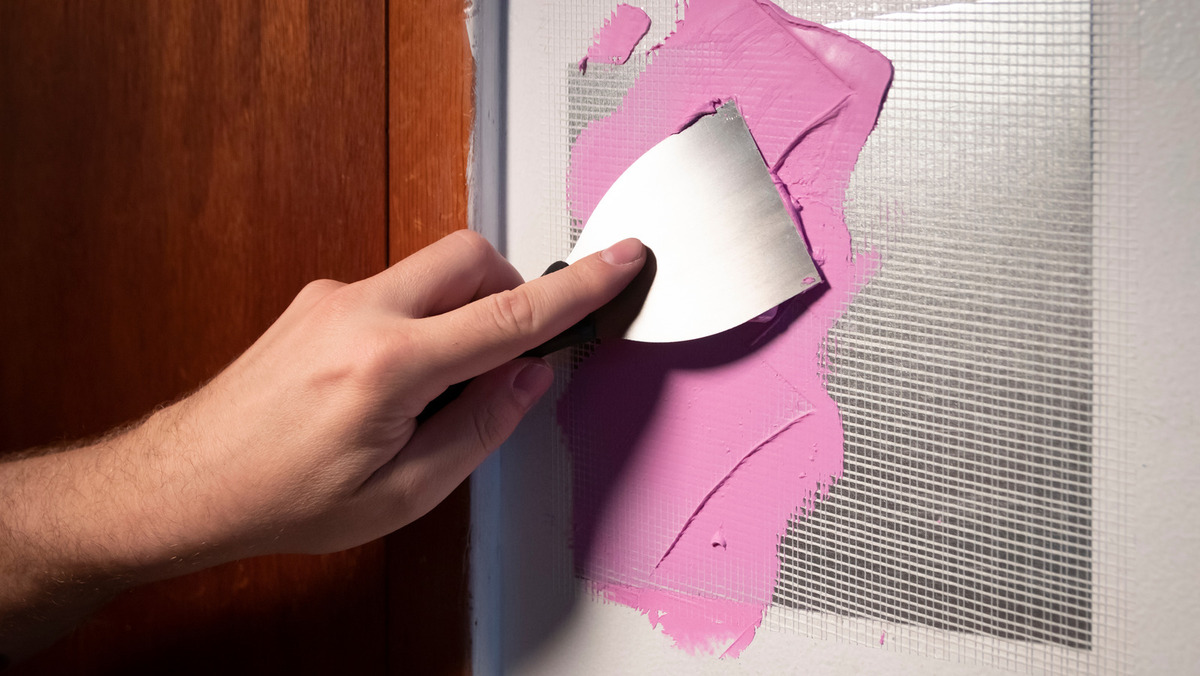

Articles
What Can I Use To Color Candles
Modified: December 7, 2023
Discover a variety of articles on what you can use to color candles. Learn how to add vibrant hues and create unique designs with our helpful guides and tutorials.
(Many of the links in this article redirect to a specific reviewed product. Your purchase of these products through affiliate links helps to generate commission for Storables.com, at no extra cost. Learn more)
Introduction
Color plays a significant role in enhancing the beauty and ambiance of candles. Whether you are making candles for personal use or intending to sell them, adding vibrant colors can make your candles more visually appealing. The good news is that there are plenty of options available when it comes to coloring candles. From natural ingredients to synthetic dyes and specialized colorants, you have a wide range of choices to experiment with.
In this article, we will explore different methods and materials that you can use to color your candles. Whether you prefer natural, eco-friendly options or vibrant synthetic colors, there is something for everyone. So let’s dive in and discover the exciting world of candle coloring!
Key Takeaways:
- Embrace the diverse world of candle coloring, from natural botanical powders to vibrant synthetic dyes, and unleash your creativity to make visually stunning and unique candles for personal use or gifting.
- Experiment with different coloring methods, such as oil-based pigments, mica powders, and gel-based colorants, to achieve translucent, shimmering, and vibrant colors that will captivate and elevate the beauty of your candles.
Read more: What Can I Use To Scent Candles
Natural Ingredients for Coloring Candles
If you prefer a more natural approach to coloring your candles, there are several ingredients that you can use to achieve beautiful and earthy tones.
1. Botanical Powders: Botanical powders derived from plants, flowers, and herbs can be an excellent choice for adding color to your candles. Powders such as beetroot, turmeric, spirulina, and cocoa powder can create lovely shades of red, yellow, green, and brown respectively.
2. Spices: Not only do spices add flavor to your dishes, but they can also bring warmth and richness to your candles. Cinnamon, paprika, and saffron are just a few examples of spices that can be used to impart color and a subtle aroma to your candles.
3. Natural Wax Additives: Some natural wax additives, such as soy flakes and beeswax pellets, come in a variety of colors that can be incorporated into your candle-making process. These additives not only provide color but also enhance the performance and characteristics of the wax.
It is important to note that when using natural ingredients, the color outcome may vary depending on factors such as the type of wax used and the concentration of the ingredient. It is a good idea to conduct small test batches to determine the desired shade before making a larger batch.
Synthetic Dyes for Coloring Candles
If you are looking for a wide range of vibrant and consistent colors for your candles, synthetic dyes can be a great option. These dyes are specifically formulated for candle-making and offer a variety of shades to choose from. Here are a few common types of synthetic dyes:
1. Liquid Candle Dyes: Liquid dyes are typically concentrated colorants that can be easily mixed into your melted wax. They come in a wide range of colors and offer excellent color saturation. Just a few drops of liquid dye can give your candles a vibrant and intense hue.
2. Dye Blocks: Dye blocks are solid, pigmented blocks that need to be melted and mixed with your melted wax. They offer a more convenient and mess-free option compared to liquid dyes. Dye blocks are available in various shades and can be easily customized by blending different blocks together.
3. Dye Chips: Dye chips are small, concentrated chips that can be easily added to your melted wax. They dissolve quickly and offer a hassle-free way to color your candles. Dye chips are available in a wide range of colors and can produce vibrant and consistent results.
When using synthetic dyes, it is important to follow the manufacturer’s instructions for proper usage and dosage. Start with a small amount and gradually increase the concentration until you achieve your desired color. Keep in mind that different waxes may react differently to dyes, so it’s recommended to conduct test batches to ensure that the color is suitable for your specific wax type.
Oil-Based Pigments for Coloring Candles
If you’re looking for a versatile and easy-to-use option for coloring candles, oil-based pigments can be an excellent choice. These pigments are highly concentrated and mix well with various types of wax, allowing you to create custom colors for your candles.
Oil-based pigments are available in a wide range of shades and can be easily incorporated into your candle-making process. Here are a few key points to keep in mind when using oil-based pigments:
1. Compatibility: Oil-based pigments are suitable for use with most commonly used waxes such as soy, paraffin, and beeswax. However, it is always recommended to check the compatibility of the pigment with your specific wax type before using it.
2. Concentration: Oil-based pigments are highly concentrated, so a little goes a long way. Start with a small amount and gradually add more as needed to achieve your desired color intensity.
3. Mixing: To incorporate oil-based pigments into your melted wax, it is recommended to heat the pigment and a small amount of melted wax separately. Then, gradually add the pigment mixture to the larger batch of melted wax while stirring continuously to ensure even distribution.
4. Testing: As with any coloring method, it is important to conduct small test batches to determine the desired shade and to ensure that the oil-based pigment is compatible with your wax and does not affect the quality or performance of the candle.
Oil-based pigments offer versatility in terms of color options and ease of use. They can help you create candles with vibrant and long-lasting colors that are sure to captivate the eyes and enhance the overall aesthetic appeal of your candles.
Powdered Pigments for Coloring Candles
If you’re looking for a versatile and cost-effective option for coloring your candles, powdered pigments can be an excellent choice. These fine powders come in a wide range of hues and can be easily mixed into your melted wax to create beautiful and vibrant colors.
Here are some key points to keep in mind when using powdered pigments:
1. Variety of Colors: Powdered pigments are available in a vast array of colors, allowing you to experiment and create custom shades for your candles. You can blend different pigments together to achieve unique color combinations.
2. Mixing: To incorporate powdered pigments into your melted wax, it is recommended to disperse the pigment in a small amount of melted wax or a suitable liquid carrier. This ensures even distribution and avoids clumping or streaks in the final color.
3. Adjustment: Since powdered pigments come in concentrated form, you have control over the intensity of the color. You can add more or less pigment to achieve your desired shade.
4. Compatibility: Powdered pigments are compatible with various types of wax, such as soy, paraffin, and beeswax. However, it’s always advisable to conduct a small test batch to ensure compatibility and to determine the appropriate amount of pigment to use.
5. Blending: If you want to create a marbled or swirled effect in your candles, powdered pigments offer excellent blending capabilities. You can mix different colors together to create unique patterns and designs.
Powdered pigments are a popular choice among candle makers due to their versatility and ease of use. They allow for creativity and customization, enabling you to create candles with stunning colors that will delight both your eyes and those of your customers.
Read more: What Can I Use For Insulation
Wax Crayons for Coloring Candles
If you’re looking for a fun and easy way to add color to your candles, wax crayons can be a great option. They are readily available, affordable, and come in a wide range of colors, making them perfect for candle coloring projects.
Here are some important points to consider when using wax crayons for coloring candles:
1. Grating or Shaving: To incorporate wax crayons into your melted wax, you will need to grate or shave the crayons into small pieces. This will help them melt quickly and evenly. You can use a kitchen grater or a sharp knife to achieve this.
2. Mixing: Once you have grated or shaved the wax crayons, you can add them to your melted wax. Stir the mixture thoroughly to ensure the colors are evenly distributed throughout the wax. Take care not to add too much crayon, as it can affect the consistency of the wax.
3. Experimentation: Wax crayons offer the opportunity to mix different colors and create unique shades for your candles. You can blend multiple crayons together to achieve your desired color or experiment with layering different colors to create a visually appealing effect.
4. Testing: As with any coloring method, it is important to conduct small test batches to determine the desired shade and to ensure that the wax crayons do not affect the burning properties or quality of the candles.
While wax crayons are a fun and accessible option for coloring candles, it is worth noting that they may not produce the same level of color intensity as other methods. The final color may vary depending on the type of wax used and the amount of crayon added.
Wax crayons are a great choice for beginners or those looking to add a pop of color to their candles without investing in specialized colorants. So grab some crayons, unleash your creativity, and turn your plain candles into vibrant works of art!
You can use liquid candle dye or dye chips to color candles. Be sure to follow the recommended usage rates for the specific type of wax you are using to achieve the desired color intensity.
Mica Powders for Coloring Candles
If you’re looking to add a touch of luminescence and sparkle to your candles, mica powders can be an excellent choice. These shimmering pigments are made from finely ground minerals and come in a wide range of dazzling colors.
Here are some important points to consider when using mica powders for coloring candles:
1. Versatility: Mica powders can be used to create subtle or bold colors, depending on the amount added to your melted wax. They offer a unique shimmering effect that can enhance the visual appeal of your candles.
2. Application: Mica powders can be mixed directly into your melted wax or blended with a suitable liquid carrier, such as rubbing alcohol or a fragrance oil, to create a paint-like consistency. This allows you to brush or swirl the mica mixture onto the surface of your candles for more precise color placement and designs.
3. Layering: Mica powders are great for layering colors to create a multi-dimensional effect in your candles. You can achieve stunning results by painting multiple layers of different mica powders onto your candles.
4. Testing: As with any coloring method, it is always recommended to conduct small test batches to determine the desired shade and to ensure that the mica powders do not affect the overall quality or performance of the candles.
5. Heat Resistance: Mica powders are generally heat-resistant, which means that they can withstand the higher temperatures when the candles are burning. This ensures that the color remains stable and does not fade or change when the candles are lit.
Mica powders can add a touch of elegance and glamour to your candles. They are especially popular for creating decorative candles or special occasions where a little extra sparkle is desired. So, unleash your creativity and give your candles a dazzling makeover with the magical allure of mica powders!
Liquid Food Coloring for Coloring Candles
If you’re looking for a readily available and budget-friendly option for coloring your candles, liquid food coloring can be a viable choice. While primarily used for culinary purposes, liquid food coloring can also be used to add a pop of color to your candles.
Here are some important points to consider when using liquid food coloring for coloring candles:
1. Availability: Liquid food coloring is widely available in supermarkets and baking supply stores, making it easily accessible for candle makers. They come in a variety of vibrant colors, allowing you to create a wide range of shades for your candles.
2. Compatibility: Liquid food coloring is typically water-based, which means it is suitable for use with waxes that are compatible with water-based ingredients, such as certain types of soy wax. However, it may not mix well with waxes that are not water-compatible, such as paraffin wax.
3. Concentration: Liquid food coloring is less concentrated compared to other specialized candle colorants. As a result, you may need to use a larger quantity of food coloring to achieve your desired color intensity. It’s important to test and adjust the amount of food coloring to achieve the desired result without negatively affecting the quality of the candle.
4. Mixing: To incorporate liquid food coloring into your melted wax, it is recommended to mix a small amount of food coloring with a small amount of melted wax or a suitable liquid carrier to create a diluted color mixture. Gradually add this mixture to your larger batch of melted wax, stirring continuously until the color is evenly distributed.
5. Testing: It is essential to conduct small test batches to determine the optimal amount of liquid food coloring needed to achieve the desired color. Additionally, testing helps ensure that the food coloring does not impact the quality or burn characteristics of the candle.
While liquid food coloring may not offer the same intensity or stability as specialized candle colorants, they can still provide a cost-effective and convenient solution for coloring your candles. So, if you’re in a pinch and looking to add a splash of color to your candles, liquid food coloring could be a suitable option!
Gel-Based Colorants for Coloring Candles
Gel-based colorants are a popular choice among candle makers for achieving vibrant and translucent colors. These colorants come in a gel-like consistency, making them easy to work with and providing excellent control over color intensity.
Here are some key points to consider when using gel-based colorants for coloring candles:
1. Translucent Colors: Gel-based colorants offer a unique advantage of producing translucent colors in candles. This allows the light from the flame to pass through the candle, creating a beautiful glow and enhancing the overall aesthetic appeal.
2. Consistency and Control: The gel-like consistency of these colorants makes them easy to measure and control the amount needed for coloring your candles. You can achieve precise color shades by adjusting the quantity of the gel-based colorant added to your melted wax.
3. Compatibility: Gel-based colorants are compatible with various types of waxes, including paraffin, soy, and palm wax. It is advisable to check the manufacturer’s instructions to ensure compatibility with your specific wax type.
4. Usage: Gel-based colorants can be added directly to your melted wax and stirred thoroughly to achieve an even distribution. Some colorants may require heating before use, so it’s important to follow the instructions provided by the manufacturer.
5. Testing: As with any coloring method, it is recommended to conduct small test batches with different concentrations of the gel-based colorant to achieve the desired translucency and intensity. This helps ensure that the colorant does not affect the quality or performance of the candle.
Gel-based colorants offer an exciting way to add rich and luminous colors to your candles. Their translucent nature can create stunning visual effects when the candle is lit, allowing you to create candles that are not only visually appealing but also possess a warm and inviting ambiance.
So, if you’re looking to add a touch of brilliance and depth to your candles, consider using gel-based colorants for a unique coloring experience!
Read more: What Are The Colors Of The Advent Candles
Tips for Coloring Candles Successfully
Coloring candles can be a fun and creative process, but it’s important to keep a few tips in mind to ensure successful results. Here are some helpful tips to guide you:
1. Start with Small Batches: When experimenting with different coloring methods or materials, it’s a good idea to start with small test batches. This allows you to assess the color outcome and make any necessary adjustments before committing to a larger batch.
2. Measure and Document: Keep track of the exact amount and type of coloring agent used for each batch. This information will be valuable for replicating successful colors in the future or troubleshooting any issues that may arise.
3. Mix Thoroughly: Whether you’re using powdered pigments, liquid dyes, or any other colorants, make sure to mix them thoroughly into the melted wax. This ensures even distribution of color and avoids clumps or streaks in the final product.
4. Experiment with Color Combinations: Don’t be afraid to mix different colors together to create unique and custom shades. Blending colorants can result in beautiful and unexpected color variations that will make your candles stand out.
5. Consider Wax Type: Keep in mind that different types of wax may react differently to various colorants. Some colorants may work better with soy wax, while others may work best with paraffin or beeswax. Take into account the compatibility of the coloring agents with your specific wax type.
6. Be Mindful of Scent: Some coloring agents, especially those that are oil-based or contain fragrance, can affect the scent throw of your candles. Consider using unscented or minimally scented colorants to preserve the fragrance of your candles.
7. Test Color Stability: Certain colorants may fade or morph when exposed to heat and light over time. Conduct burn tests to assess the stability of the color and ensure that it remains true throughout the lifespan of the candle.
8. Protect Your Workspace: Coloring candles can be messy, so it’s important to protect your workspace with newspaper or wax paper to prevent staining or damage to surfaces.
9. Safety First: Always follow safety guidelines when working with colorants and hot wax. Wear protective gloves and handle hot materials with caution. Ensure proper ventilation in your workspace to avoid inhaling any fumes.
Remember, practice makes perfect! Don’t be discouraged if your first attempts don’t turn out exactly as expected. With time and experience, you’ll develop your own techniques and strategies for achieving the perfect colors for your candles.
So, embrace your creativity, have fun with the process, and enjoy the journey of coloring your candles!
Conclusion
Coloring candles is a wonderful way to make your creations visually appealing and unique. Whether you prefer natural ingredients, synthetic dyes, oil-based pigments, powdered pigments, wax crayons, mica powders, liquid food coloring, or gel-based colorants, the options are plentiful.
Using natural ingredients like botanical powders, spices, and natural wax additives can provide earthy and eco-friendly colors. Synthetic dyes offer a wide range of vibrant shades, with liquid dyes and dye blocks being popular choices. Oil-based pigments provide versatility and ease of use, while powdered pigments allow for customization and blending.
Wax crayons, with their convenient and budget-friendly nature, can add a pop of color to your candles. Mica powders offer a touch of luminescence and sparkle, creating visually stunning effects. Liquid food coloring, readily available and affordable, can be a convenient option in a pinch. Gel-based colorants provide translucent colors and allow for precise color intensity control.
To color candles successfully, it’s important to start with small test batches, measure and document the amounts used, mix thoroughly, and experiment with color combinations. Consider the compatibility of colorants with your wax type, protect your workspace, and ensure safety precautions are followed.
Coloring candles is a creative and enjoyable process that allows you to unleash your artistic side. With practice and experimentation, you’ll develop your own techniques and preferences when it comes to achieving the perfect colors for your candles.
So, whether you’re making candles for personal use, gifting them to loved ones, or planning to sell them, adding vibrant and visually stunning colors will undoubtedly elevate the beauty and allure of your candles. Enjoy the journey of candle coloring and have fun creating candles that not only illuminate but also captivate!
Frequently Asked Questions about What Can I Use To Color Candles
Was this page helpful?
At Storables.com, we guarantee accurate and reliable information. Our content, validated by Expert Board Contributors, is crafted following stringent Editorial Policies. We're committed to providing you with well-researched, expert-backed insights for all your informational needs.














0 thoughts on “What Can I Use To Color Candles”